Key takeaways:
- Phosphorus is an essential macronutrient that plants need to grow.
- It helps plants build strong cell walls and grow strong roots.
- A phosphorus deficiency can cause stunted growth and dark green leaves.
- Homemade phosphorus fertilizers can be made with common household ingredients.
- Soil pH affects a plant’s ability to absorb phosphorus.
- A soil test is the best way to determine if a plant needs phosphorus.
As the starring ‘P’ in NPK profiles, Phosphorus (P) is an essential macronutrient that all plants need to grow.
Phosphorus is one of the main macronutrients listed on fertilizer packages known as the NPK ratio, and is present at varying levels in most soils. This superstar macronutrient helps plants build strong cell walls, which keeps the plant upright, and also plays a role in growing strong roots that absorb nutrients from the soil.
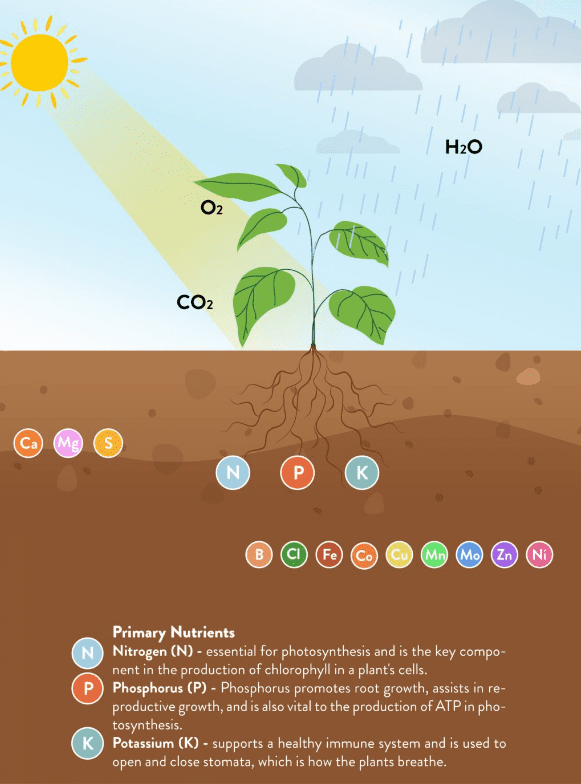
In nature, when plants take up phosphorus from the soil, decomposing plant matter and dead critters replenish the depleted nutrients.
For indoor plants, we have to replenish the nutrients they absorb ourselves with an indoor plant fertilizer to make sure the plant has a fertile growing environment.
The fun part of gardening is that we get to reconnect with the natural process as we learn about a plant’s nutrient supply by using homemade sources of phosphorus with certain food scraps.
In this post, I’ll show you how to make a homemade phosphorus fertilizer your plants will live for with common household ingredients.
How phosphorus is used by plants
An essential macronutrient, phosphorus contributes to several life-sustaining and developmental processes of plant growth, including:
- Strong root development
- Cellular reproduction
- Healthy development of cell walls
- Flower and fruit production
- Movement and use of sugars and starches (energy)
How to know if your plant needs phosphorus
Many plants like to be fertilized at least once or twice a year during the growing season. When you use a balanced fertilizer, you can be sure that the plant is getting some phosphorus with the other goodies.
Some plants need more phosphorus than others though, particularly flowering plants like hoya and those with thicker root systems.
These types of plants deplete the levels of phosphorus in soil and fertilizer faster than leafy green plants, and may need to be fertilized a little more frequently. The best way to know if your plant needs phosphorus is by doing a soil profile test to measure the nutrient levels.
The plant may let you know on its own that it isn’t getting enough phosphorus. Some signs of a phosphorus deficient plant include:
- Slowed or stunted growth, with small or no new leaves
- Extra dark green leaf color
- Brown, bronze, or purple leaf edges
- Brown spots
If there’s no phosphorus in the soil, the plant’s roots won’t develop or grow, and they won’t be able to absorb the nutrients in the soil. The plant won’t be able to move nutrients that it has absorbed around, and sugars and starches will build up in the plant tissue.
Since energy can’t be absorbed or transported without phosphorus, phosphorous deficiency often means the plant’s growth will slow or stop. Oh no!! 😔
Soil pH also affects whether plants are able to absorb phosphorus. A highly alkaline (between 8-10+pH), or highly acidic (below 6 pH) soil type will bond phosphorus to other molecules in the soil, making it unavailable to the plant.
This is known as nutrient lockout. It’s a good idea to take a quick pH test of your soil before doctoring it up with any type of fertilizer to see if pH is within the fertile range first.
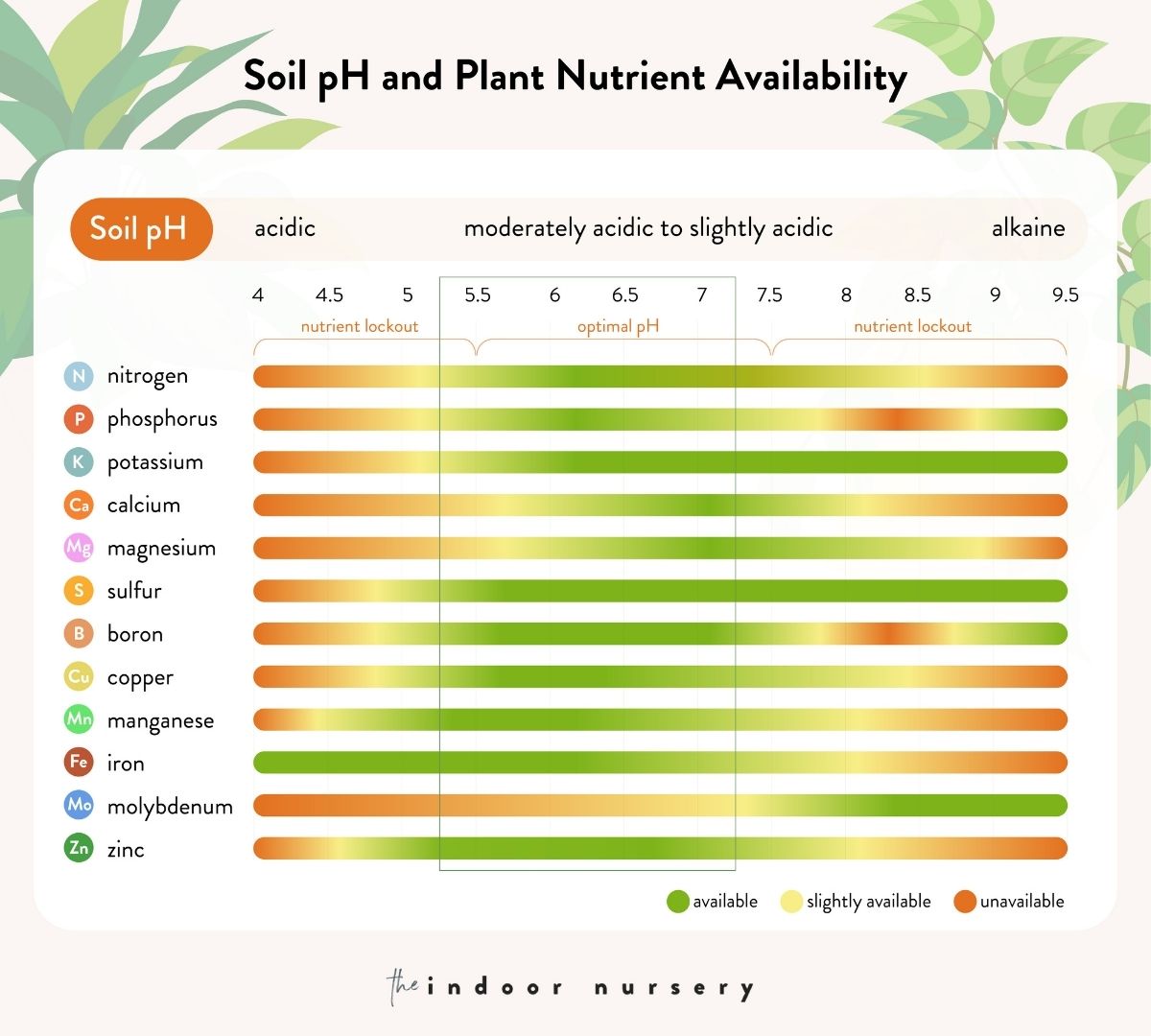
Types of fertilizers
The availability and concentration of the fertilizer you apply plays a part in how much you need to give the plant. Your plant’s needs will also guide how frequently and what form of fertilizer (solid or liquid) you should apply.
Liquid plant fertilizers are available immediately to plants, and are usually applied in lower concentrations since the plant might absorb too many nutrients at once. If your plant is suffering from a phosphorus deficiency, a liquid fertilizer is the right choice to help your plant recover quickly.
You’ll typically need to dilute the liquid fertilizer in water to apply it to soil, but do follow the instructions of your particular fertilizer for the best results and frequency guidelines. Some plants like a little fertilizer every other week with their waterings in spring and summer.
You can easily make liquid phosphorus fertilizers at home with a few simple ingredients and some determination (more on that later!).
Like liquid fertilizer, solid fertilizers come in synthetic and organic forms. These are not available for immediate absorption, but they remain in the soil for weeks or months at a time.
- Granular fertilizers are formulated to release at a certain pace over time and will dissolve a little bit with each watering.
- Organic fertilizer similarly breaks down slowly.
- Solid fertilizer is best to fortify soils and require fewer applications.
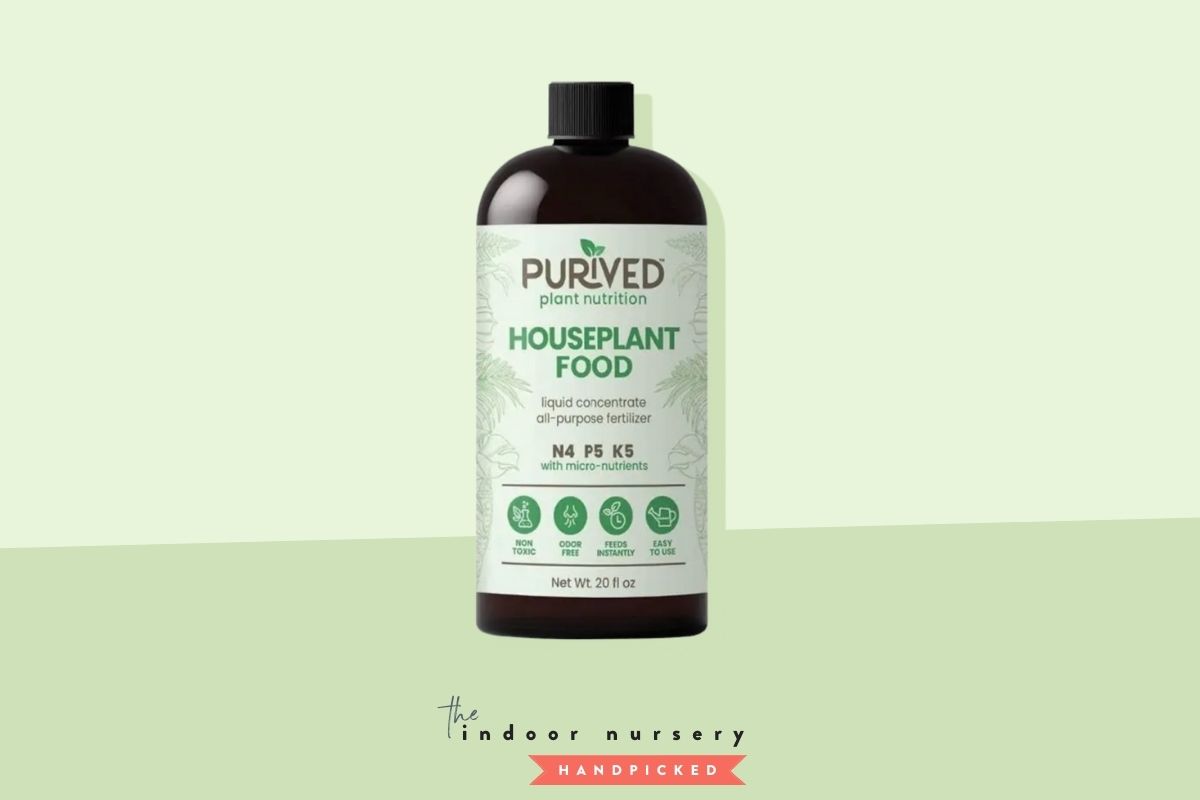
DIY homemade phosphorus fertilizer
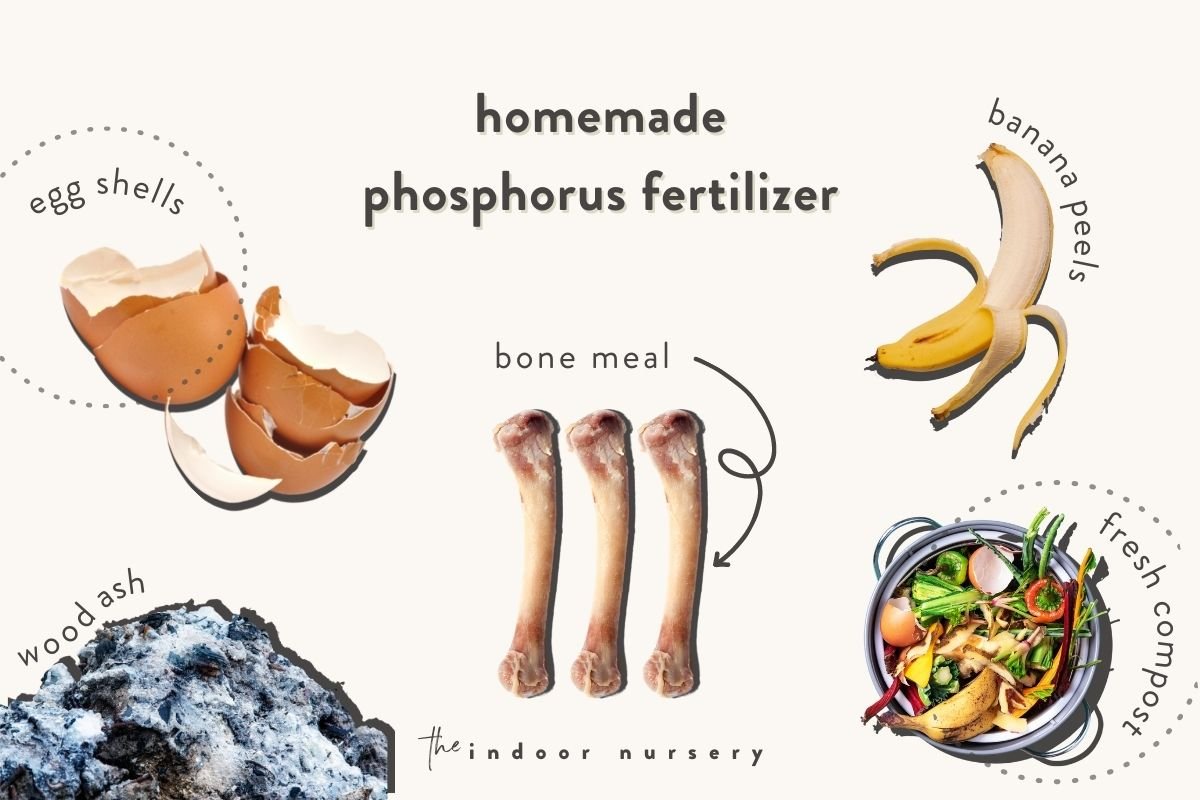
You can make your own homemade fertilizer from scratch! There are several simple recipes for solids and liquids rich in nutrients that will decrease your food waste while maintaining healthy plants.
Compost
Composting is an easy way to channel your food scraps to reuse in your home garden. Eggs shells, banana peels, grains, and mushrooms will add phosphorus to your compost pile or worm composting bin and result in a great plant fertilizer dense in this vital nutrient.
Meat, dairy, eggs, fats, and oils may be high in phosphorus, but should not be added to your compost.
Egg shells
While the egg yolk and white isn’t good for composting, egg shells are rich in calcium and phosphorus, as well as other minerals that your plant will looove 🥰 They can either be crushed and added sparingly as a solid fertilizer, or the shells can be boiled in water to leach the nutrients.
Water your plants with this egg-shell infusion once cooled. It should be used within the day so the liquid doesn’t go bad or attract bacteria.
Wood ash
Ashes from your fireplace or outdoor fire pit are rich in vitamins and minerals that plants love to sip up from soil. In addition to phosphorus, wood ashes contain calcium, potassium, magnesium, among other minerals and trace elements.
Banana peels
Banana peels are a great source of phosphorus, and it’s easy to make a liquid fertilizer from them that you can use to water your plants. This is how to make a “banana tea”:
- Eat a banana or two 🍌
- Cut up the banana peel into rough 1-inch chunks
- Place the chunks of peel in a liter of water in an airtight container
- Steep for five to six days
- Add another liter to the solution, then strain the liquid
The resulting solution will be rich in phosphorus! Feed directly to plants in need.
Bone meal
This is a phosphorus-rich ingredient your master-gardening grandma probably has in her shed. It’s a tried and true, powdered source of phosphorus that you can easily amend your soil with.
Bone is packed with both phosphorus and calcium, as well as some nitrogen, which becomes available slowly over several months as the material breaks down. Bone meal is made from ground animal bones that have been cooked and crushed.
You can definitely buy it (shop bone meal on Amazon here), but why? Next time you buy a roast chicken, save the carcass and make your own!
To make your own bone meal, you will need:
- Bones (chicken, turkey, or cow)
- Pressure cooker or Instapot
- Dehydrator
- Mortar and pestle
Instructions:
- Clean the bone meat and cartilage off of the bones.
- Pressure-cook the bones in water. In a pressure cooker, submerge the bones in water and cook at the highest setting for two hours. This will clear the bones of any remaining non-bone material, and will leave the bones brittle and easily cracked.
- The bones will still be moist, however, so they can either be pulverized in a food processor, then left to dry, or dehydrated for 12 hours before being crushed. Even cooked bones can be rough on blender blades, so I recommend using a mortar and pestle to pulverize them.
- Sprinkle a single potted plant with 1-2 tablespoons of your homemade bone meal and water thoroughly to feed your plants!
FAQ
Can you give a plant too much phosphorus?
Like any kind of fertilizer, too much phosphorus can damage your plant. Overly- concentrated liquid fertilizers high in phosphorus can burn its tender roots and damage leaves as it leeches moisture from your plant. Excess phosphorus can also suppress beneficial bacteria in the soil. If you’re uncertain about the phosphorus concentration of a fertilizer you’re using, remember that less is more.
To be most prudent, use a balanced fertilizer (for example, 10-10-10 NPK ratio) and follow the provided directions. For homemade fertilizers, treat it like any other product and give half- or quarter-strength applications to be sure you’re not overdoing it.
More about fertilizing
- 10 Best Worm Composter Bins For Easy Homemade Compost
- Compost Starter 101: When You Need It And How To Make It
- Our top pothos fertilizer picks for luscious vines
- 5 reasons to use coffee as fertilizer for your plants
- Best fertilizer for Monstera plants for gorgeous leaves
- Fertilizer Burn on Plants? Here’s How to Fix it
- Fiddle leaf fig fertilizer: How to feed your fiddle leaf

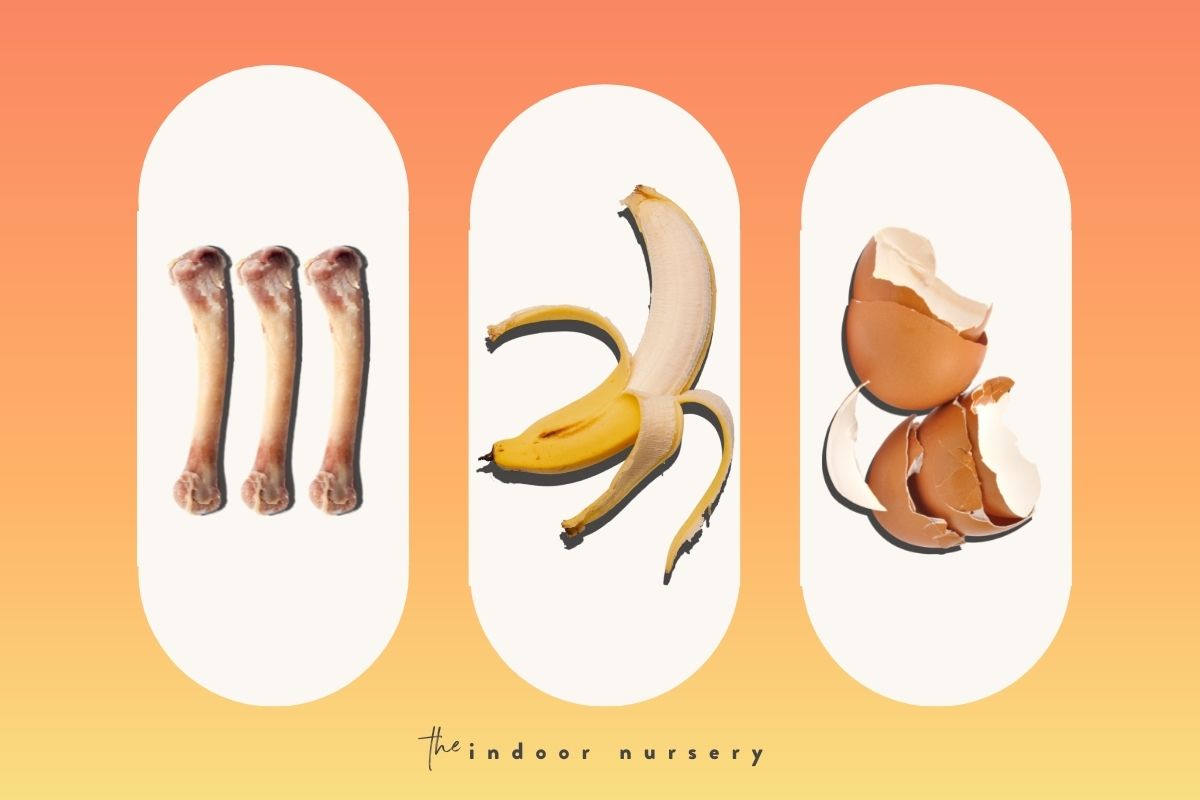
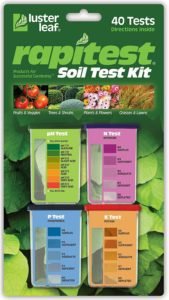

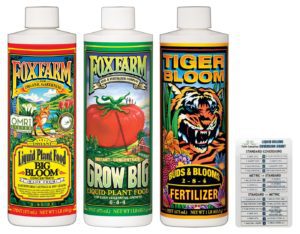

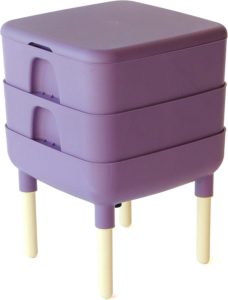
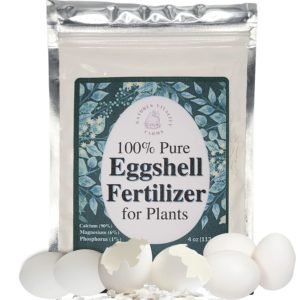
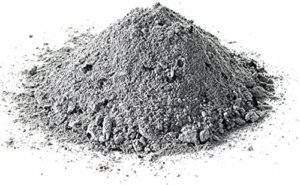
Can I make a concentrated fertilizer using several banana peels that have been soaked in a gallon of water for 3 to 4 weeks?
Hey, John! Yeah, the more the merrier I guess 🙂 I would be careful with bacterial or fungal growth in the water by letting it sit for that long. Depending on the climate where you are, this may also cause fermentation. If there is extra growth or fermentation, then this kind of concentration may actually be harmful to plants. This is why I recommend just a couple of liters soaked for less than a week. If it starts to smell funky or have a film on top, or chunks of mold or growth, then I wouldn’t use it on your potted plants.
Hi how do I mix the four ingredients to make one compostt should I boil all of the and make a solution
Hi, again! You don’t need to boil the ingredients! Once you have all your ingredients prepared, layer them into your compost pile or bin. Start with a layer of browns (like dried leaves or newspaper), then add a layer of your compost ingredients. Top with another layer of browns. Over time, these layers will break down into nutrient-rich compost. Remember to turn your compost pile every few weeks to help it decompose evenly.
What else can I use to make high phosphorus compost or fertilizer
Hey, Nomphilo! Thanks for reading 🙂 You can also use bat guano, crab or shrimp shells, and rock phosphate. Bat guano, a rich source of phosphorus, can be mixed into your compost pile or directly into your garden soil. Crab or shrimp shells, after being rinsed, dried, and crushed, can also be added to your compost. Lastly, rock phosphate, a naturally occurring mineral high in phosphorus, can be ground into a powder and mixed into your soil or compost. These items can easily be purchased online or at a local garden center. Always remember to test your soil before adding any amendments to ensure you’re providing the nutrients your plants need!!!! You don’t want to accidentally fry them.